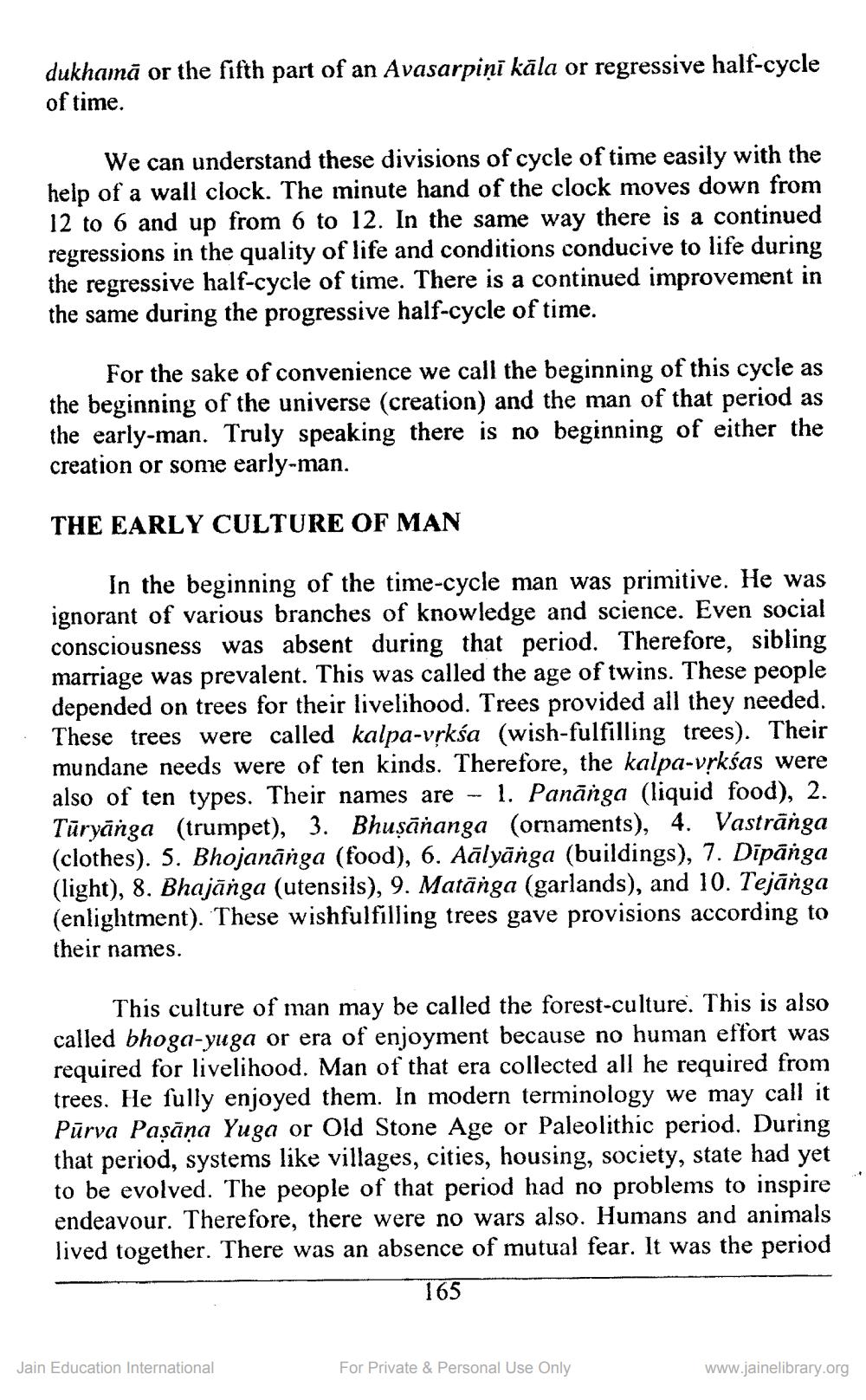________________
dukhamā or the fifth part of an Avasarpiņi kāla or regressive half-cycle of time.
We can understand these divisions of cycle of time easily with the help of a wall clock. The minute hand of the clock moves down from 12 to 6 and up from 6 to 12. In the same way there is a continued regressions in the quality of life and conditions conducive to life during the regressive half-cycle of time. There is a continued improvement in the same during the progressive half-cycle of time.
For the sake of convenience we call the beginning of this cycle as the beginning of the universe (creation) and the man of that period as the early-man. Truly speaking there is no beginning of either the creation or some early-man.
THE EARLY CULTURE OF MAN
In the beginning of the time-cycle man was primitive. He was ignorant of various branches of knowledge and science. Even social consciousness was absent during that period. Therefore, sibling marriage was prevalent. This was called the age of twins. These people depended on trees for their livelihood. Trees provided all they needed. These trees were called kalpa-vrkśa (wish-fulfilling trees). Their mundane needs were of ten kinds. Therefore, the kalpa-vrkśas were also of ten types. Their names are - 1. Panānga (liquid food), 2. Tūryānga (trumpet), 3. Bhușānanga (ornaments), 4. Vastrānga (clothes). 5. Bhojanānga (food), 6. Aālyānga (buildings), 7. Dīpānga (light), 8. Bhajānga (utensils), 9. Matānga (garlands), and 10. Tejānga (enlightment). These wishfulfilling trees gave provisions according to their names.
This culture of man may be called the forest-culture. This is also called bhoga-yuga or era of enjoyment because no human effort was required for livelihood. Man of that era collected all he required from trees. He fully enjoyed them. In modern terminology we may call it Pūrva Paşāņa Yuga or Old Stone Age or Paleolithic period. During that period, systems like villages, cities, housing, society, state had yet to be evolved. The people of that period had no problems to inspire endeavour. Therefore, there were no wars also. Humans and animals lived together. There was an absence of mutual fear. It was the period
165
Jain Education International
For Private & Personal Use Only
www.jainelibrary.org




